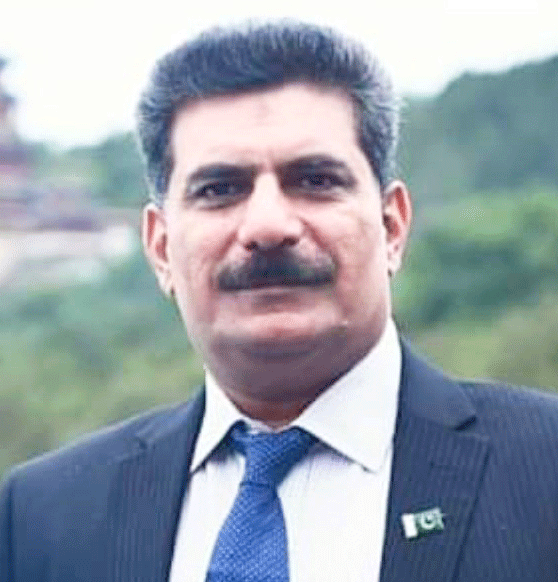The Pahalgam conflict, a recent flashpoint between two nuclear-armed neighbors-India and Pakistan-once again exposed the fragility of peace in South Asia and the volatile nature of atomic diplomacy. At a time when both nations should have embraced dialogue and exercised restraint, India’s response marked a departure from diplomatic norms, raising global concerns about the dangers of miscalculation between nuclear states.
In the aftermath of the Pahalgam incident, India quickly pointed fingers at Pakistan, alleging cross-border involvement without a thorough investigation or presenting concrete evidence. This premature blame game was followed by immediate military aggression. Instead of exploring diplomatic channels, particularly when both countries possess nuclear capabilities that demand the highest level of caution and responsibility, India’s decision to escalate tensions was widely regarded as a strategic misstep-perhaps even a blunder.
One might ask: why did India not allow diplomacy a chance to resolve the issue? In matters involving two nuclear-armed nations, diplomacy is not merely a choice; it is a necessity. The very presence of nuclear weapons imposes a moral and strategic obligation on states to pursue peaceful resolution mechanisms. In this case, however, India chose a path of hostility and provocation, undermining the region’s stability and threatening to push South Asia into a deeper crisis.
India’s aggressive posture was likely influenced by its perception of Pakistan’s internal vulnerabilities. With Pakistan grappling with terrorism, political unrest, and economic instability, India might have assumed that Pakistan lacked the capacity to respond decisively. This miscalculation proved to be deeply flawed. What India failed to account for was the resilience of the Pakistani state and its people.
Pakistan, despite its challenges, stood united. The entire nation rallied behind the armed forces, and the media echoed a singular voice in defense of the homeland. The civil-military unity that emerged during this crisis served as a powerful reminder that Pakistan, though often mired in internal crises, has the capability to forge national solidarity in times of external threat.
Moreover, the Indian assumption underestimated the preparedness and professionalism of Pakistan’s defense institutions. The Pakistan Air Force responded with precision and restraint, successfully defending the country’s airspace and signaling its capability to deter aggression. The professionalism and discipline displayed by the air force garnered international attention and respect, bolstering Pakistan’s strategic credibility.
Another important dimension of this conflict was the role played by regional allies. China’s support was particularly significant. As a longstanding strategic partner, China not only provided moral and diplomatic backing but also extended vital defence-related support. Beijing’s firm stance acted as a deterrent against further Indian escalation and reaffirmed the strength of the China-Pakistan alliance.
Türkiye and Bangladesh also expressed solidarity with Pakistan. Türkiye, in particular, highlighted the need for dialogue and peaceful resolution, calling upon the international community to ensure that both nations exercise restraint. Bangladesh, while maintaining a more neutral tone, nonetheless underscored the importance of peace in the subcontinent and called for a de-escalation of tensions.
Iran, too, played a commendable diplomatic role. The Iranian Foreign Minister’s visits to both New Delhi and Islamabad demonstrated Tehran’s commitment to regional peace and its willingness to mediate. This gesture was appreciated in both capitals and reflected Iran’s growing role as a peace broker in South Asia.
At the core of atomic diplomacy lies the principle of deterrence. Nuclear weapons, while catastrophic in potential, are primarily maintained not for use, but to prevent war through the promise of mutually assured destruction. Both India and Pakistan are aware of the stakes involved. Yet, India’s recent actions suggest a troubling shift away from deterrence-based caution towards more assertive military brinkmanship.
Such a shift is dangerous. In a region as densely populated and politically charged as South Asia, the margin for error is slim. A single misjudgment or miscommunication can spiral into a full-blown conflict with nuclear undertones. This reality should have propelled India toward diplomacy, not away from it.
Pakistan’s measured response-avoiding escalation while maintaining defensive readiness-was a textbook application of responsible nuclear posture. By not matching India’s aggression with equal or greater force, Pakistan upheld the principle of deterrence while avoiding unnecessary escalation. This not only safeguarded national interests but also maintained regional stability.
While Pakistan’s defence and diplomatic responses have been commendable, the conflict also underscores the need for internal reforms. National strength does not solely lie in military capability-it is equally dependent on political stability, economic resilience, and institutional integrity.
To sustain its defence posture and elevate its global standing, Pakistan must embark on comprehensive reforms. First and foremost is the supremacy of the Constitution. A transparent, accountable, and fair political system is essential for long-term stability. When political processes are perceived as legitimate, public trust is strengthened, and internal divisions are minimized.
A stable political system will, in turn, provide the foundation for economic recovery. Economic reforms that promote investment, job creation, and fiscal responsibility are crucial. The rule of law must prevail so that justice is not only done but seen to be done. This includes reforming the judicial system to ensure timely and impartial decisions, which will enhance public confidence and attract foreign investment.
In parallel, the education and health sectors require urgent attention. A well-educated and healthy population is the cornerstone of a resilient nation. Investments in these sectors will yield long-term dividends by fostering innovation, productivity, and social cohesion.
Perhaps the most remarkable outcome of the Pahalgam crisis was the unity displayed by the Pakistani people. Regardless of political affiliation, ethnic identity, or socioeconomic background, the nation stood together. This unity is a strategic asset that must be preserved and nurtured. National resilience is not just a military phenomenon-it is a collective spirit that binds a people together in pursuit of common goals.
The media played a crucial role in shaping national discourse and maintaining morale. Unlike in past conflicts where narratives were fragmented, this time, the media largely echoed the national sentiment of unity, defence, and restraint. Responsible journalism, when aligned with national interests, can be a force for cohesion and clarity.
The Pahalgam conflict is a case study in the perils of misjudging an adversary and the importance of atomic diplomacy. India’s failure to explore diplomatic solutions and its quick resort to aggression undermined its position on the global stage. In contrast, Pakistan’s restraint, national unity, and international diplomacy showcased a mature and calculated response.
Yet, this conflict also serves as a wake-up call for Pakistan. Military strength alone is not enough. Reforms across all sectors-political, economic, judicial, and educational-are imperative. The supremacy of the Constitution, transparency in governance, and rule of law must be the guiding principles moving forward.
In the end, the resilience of the Pakistani nation, coupled with regional alliances and strategic maturity, turned the tide of the conflict. But the journey ahead requires commitment, vision, and unity. If these lessons are internalized, Pakistan will not only defend its borders-it will rise
Sign in
Welcome! Log into your account
Forgot your password? Get help
Password recovery
Recover your password
A password will be e-mailed to you.





